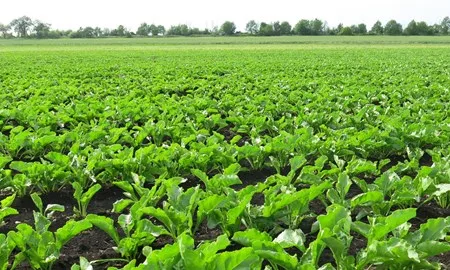
From keeping beet and potatoes free of disease to decisions about oilseed rape and grassweed management, Darren Adkins has the latest advice.
Author
Darren Adkins | 27th July 2020Midlands: 5 tips to make sure crops keep on track during August
Crop Progress
Cereals and oilseed rape harvest is ongoing in the Midlands, and as expected, yields of oilseed rape have been all over the place due to poor establishment and cabbage stem flea beetle challenges. Potato and sugar beet crops have reached full canopy. With the loss of neonicotinoid seed treatments in sugar beet and perfect conditions for aphids transmitting virus yellows, there have been widespread reports of infections in crops this summer.
Darren’s agronomy tips for August
1. Tailor second fungicide sprays to planned sugar beet lifting dates
Most sugar beet crops have or will soon be receiving their first fungicide spray. Most crops are fairly clean for fungal disease, but the application should be made before the onset of disease. Too late and it becomes harder to control for the rest of the season.
Sprays should be followed up with a second spray within 28 days to prevent reinfection, but dose can be tailored to the planned lifting date. For early lifted crops, it may be sufficient to apply a half dose, but for any crops planned to be lifted after mid-October then a full dose would be more beneficial in keeping green leaf area and building yield.
Escolta (cyproconazole + trifloxystrobin) is a good option for both timings with the full dose being 0.35 L/ha. Trials have shown a single fungicide can lift yield by 8t/ha, with the second spray adding a further 5t/ha.
2. Pull bolters from Conviso sugar beet crops as a priority
Where bolters and weed beet have established in sugar beet crops, they need managing. That’s especially important for those growing Smart Janninka KWS Conviso crops. It’s the reset button for weed beet, but only if bolter management is perfect.
If weed beet has set seed then they should be removed from the field, and where hand pulled, follow the stewardship scheme for recording bolter pulling and protecting workers spending long hours in the field.
3. Control both tuber and foliar blight in potatoes
Blight programmes are well underway with crops at full canopy stage. With more aggressive and fluazinam-insensitive strains of blight now common across the country, controlling blight can be more challenging, especially in periods of unsettled weather.
At this stage of the season it is important to control both foliar and tuber blight, and also to use a range of different modes of action throughout the blight programme.
Infinito (fluopicolide + propamocarb) is effective against both tuber and foliar blight, perfect for this stage of the programme. It offers early curative activity and long lasting protection when used at 1.6L/ha. It should not be used in blocks of more than two applications, and alternated with fungicides with a different mode of action, with a maximum of four applications through the programme.
4. Re-evaluate the importance of oilseed rape in your rotation
Many growers will be debating the merits or otherwise of continuing with oilseed rape in the rotation. If you do decide to continue then attention to detail at establishment is crucial.
Choosing a vigorous hybrid variety, such as DK Exstar or DK Extremus that can grow quickly through the vulnerable cotyledon to 4 true leaves stage is a good start. Our recent CSFB management survey showed a significant advantage for hybrids over conventional varieties.
Even more important is drilling the crop into moisture, and trying to ensure the seedbed is of a good quality for the small seed that is being drilled. Rolling the seedbed to increase seed/soil contact and applying a small amount of DAP fertiliser will also help to establish the crop.
5. Start next season’s grassweed management now
Wheat fields with a high weed burden or uneven development may benefit from a pre-harvest Roundup (glyphosate) treatment. The grain must be below 30% moisture before spraying and then needs a minimum seven day harvest interval before combining. Do not apply to crops grown for seed.
Earmark any areas of grassweeds not already mapped out for attention post-harvest – plan badly infested fields for later drilling, and use post-harvest shallow cultivations and rolling to try to encourage flushes of grassweeds to germinate so they can be sprayed off before drilling.